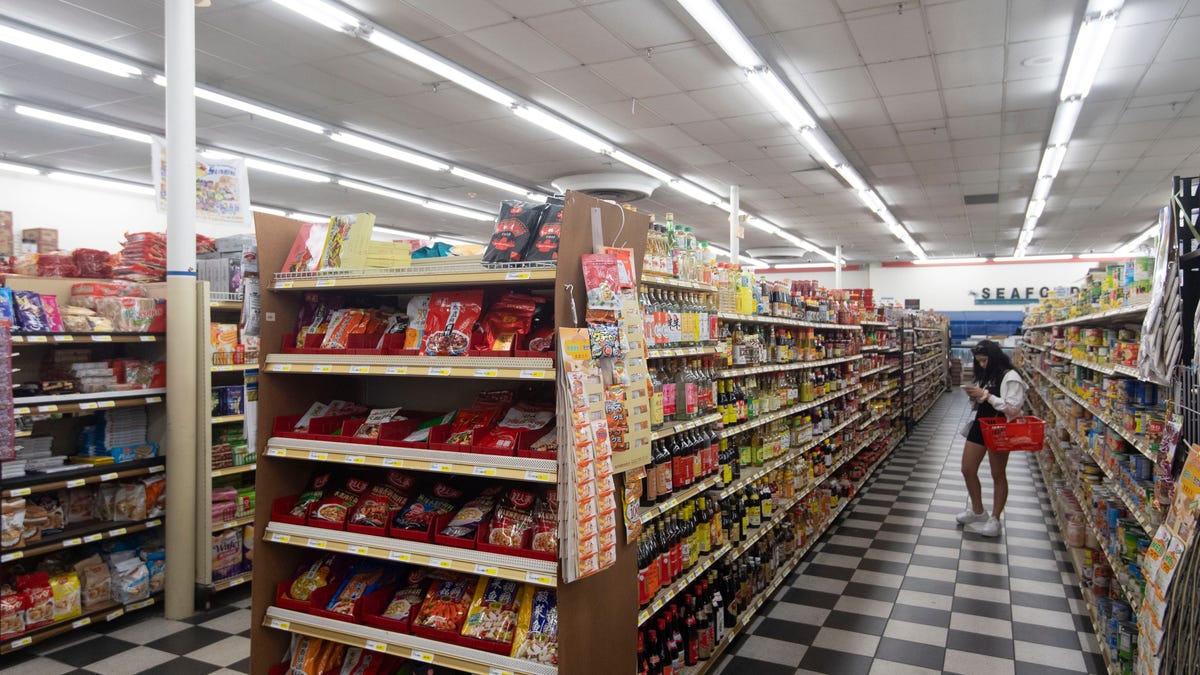Americans Frustrated with Grocery Stores: What’s Behind the Discontent?
It seems that American shoppers are becoming increasingly disenchanted with supermarkets.
A recent Gallup survey revealed that only 33% of Americans have a favorable opinion of the grocery sector, the lowest positivity rating in over twenty years. This data was released in September.
Experts point to two main factors contributing to this decline in sentiment: escalating prices and negative media coverage.
Grocery costs have risen approximately 25% since the onset of the pandemic. Although food inflation has slowed down, many consumers remain sensitive to price increases.
In response to the public’s frustrations regarding inflation, politicians have been speaking out against the grocery sector. For instance, Democratic presidential candidate Kamala Harris criticized supermarkets for price-gouging, while President Joe Biden commented on “shrinkflation” in his State of the Union address. The Federal Trade Commission has accused grocery stores of capitalizing on product shortages to increase profits, and even the beloved Cookie Monster has addressed concerns about grocery pricing.
“With a surge in inflation, people are looking for someone to blame, and this major candidate is encouraging that,” noted Scott Mushkin, founder of market research firm R5 Capital.
Remember When Supermarkets Were Beloved?
The decline in public perception of grocery stores is especially remarkable given that just a few years ago, Americans held supermarkets in high regard.
Gallup has been surveying Americans about their attitudes towards the grocery industry since 2001, with positive sentiment peaking in 2020 during the pandemic, when 63% of people viewed the sector favorably.
During that period, as dining out diminished, families turned to supermarkets for their meal needs.
“During the pandemic, shoppers truly felt that supermarkets were looking after their needs,” mentioned grocery industry analyst Phil Lempert.
Grocery stores made significant efforts to adapt to the pandemic, implementing pickup and delivery options. They also prioritized safety by distributing masks, sanitizing carts, and disinfecting checkout areas.
Fast forward four years, and “the shopping experience has declined,” according to Mushkin. “Stores are cluttered.” The previous safety measures have diminished, lines appear longer, and waiting times have increased.
“If you find yourself waiting in line while paying high prices, it’s difficult to maintain a positive attitude,” Mushkin added.
Surge in Grocery Prices
Inflation has decreased from its peak, which was at a 40-year high in the summer of 2022. However, between June 2021 and June 2022, grocery prices soared by 12.2%, outpacing overall inflation rates.
Despite easing inflation, shoppers are still very aware of prices at grocery stores.
In September, consumer confidence dropped significantly, losing almost seven points to 98.7, the most substantial decrease in three years. Concerns over ongoing inflation and job market instability fueled this decline.
According to an August YouGov survey, two-thirds of the American public views inflation as a serious issue, placing it at the top of their list of national concerns.
“People are experiencing inflation fatigue,” explained Sujeet Naik, a grocery analyst at Coresight Research. “Prices are still significantly higher compared to three to four years ago.”
The Biden administration and Harris have been vocal in directing the public’s attention towards price-gouging, attributing part of the inflation rise to corporate greed.
Biden has also criticized “shrinkflation,” which refers to the practice of reducing product quantities while maintaining prices. Many food companies are resorting to shrinkflation instead of outright price hikes.
Consumers Are Aware of ‘Shrinkflation’
One shopper, Tracy Inge, 49, from Waterville, Maine, shared her frustration via email with YSL News: “My major annoyance is that I now need to buy two cereal boxes just to get the same amount I used to get in one. The boxes may look the same size, but the contents have definitely shrunk. We don’t need more excess packaging to dispose of.”
Experts in retail suggest it isn’t completely justifiable to hold the supermarket sector accountable for issues like price-gouging or shrinkflation. The industry is experiencing declining profits and is exploring methods to remain viable.
Predictors from Coresight Research anticipate that grocery sales will rise by just 1.1% in 2024, a decline from 3.9% in 2023 and 9.1% in 2022.
According to the trade publication Grocery Dive, profit margins in grocery stores fell to 1.6% in 2023, the lowest seen since before the pandemic.
“The sector is somewhat trapped in a difficult situation,” stated Mushkin.
However, when customers see soaring prices on shelves, they frequently point fingers at supermarkets.
“It can be surprising at checkout, whether shopping in-store or online,” remarked David Bishop, a partner at the grocery consultancy Brick Meets Click.
Supermarkets “must rebuild trust”
To restore their reputation with consumers, analysts believe supermarket chains need to be more forthright about the reasons for rising prices.
“They have to rebuild trust,” said Lempert. “This confidence can be fostered through education and transparency.”
Still, analysts contend that supermarkets have a significant journey ahead of them to win back the trust of many cautious consumers.
“Until after the election and until prices stabilize,” Lempert predicted, “the outcome of the next Gallup poll might be even more unfavorable.”

